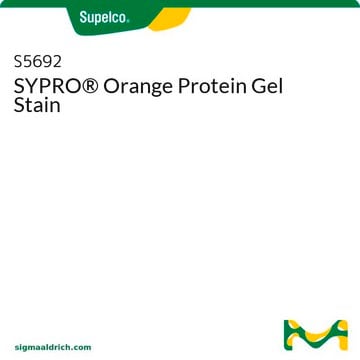B2025
Brilliant Blue G - Colloidal Concentrate
About This Item
Produits recommandés
Forme
solution
Température de stockage
room temp
Description générale
Application
- protein fragments post in vitro pepsin digestion
- ovarian tumor fluid proteome prior to profiling
- the transcription factor (TFIID) complex from Saccharomyces cerevisiae
Reconstitution
Remarque sur l'analyse
Produit(s) apparenté(s)
Mention d'avertissement
Warning
Mentions de danger
Conseils de prudence
Classification des risques
Eye Irrit. 2 - Met. Corr. 1 - Skin Irrit. 2
Code de la classe de stockage
8B - Non-combustible corrosive hazardous materials
Classe de danger pour l'eau (WGK)
WGK 2
Point d'éclair (°F)
Not applicable
Point d'éclair (°C)
Not applicable
Certificats d'analyse (COA)
Recherchez un Certificats d'analyse (COA) en saisissant le numéro de lot du produit. Les numéros de lot figurent sur l'étiquette du produit après les mots "Lot" ou "Batch".
Déjà en possession de ce produit ?
Retrouvez la documentation relative aux produits que vous avez récemment achetés dans la Bibliothèque de documents.
Les clients ont également consulté
Protocoles
Brilliant Blue G-Colloidal Concentrate stains proteins in IEF, PAGE, and SDS-PAGE gels after electrophoresis, enhancing sensitivity with protein fixation.
Notre équipe de scientifiques dispose d'une expérience dans tous les secteurs de la recherche, notamment en sciences de la vie, science des matériaux, synthèse chimique, chromatographie, analyse et dans de nombreux autres domaines..
Contacter notre Service technique









